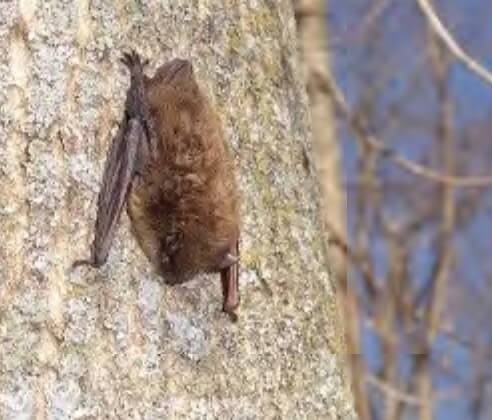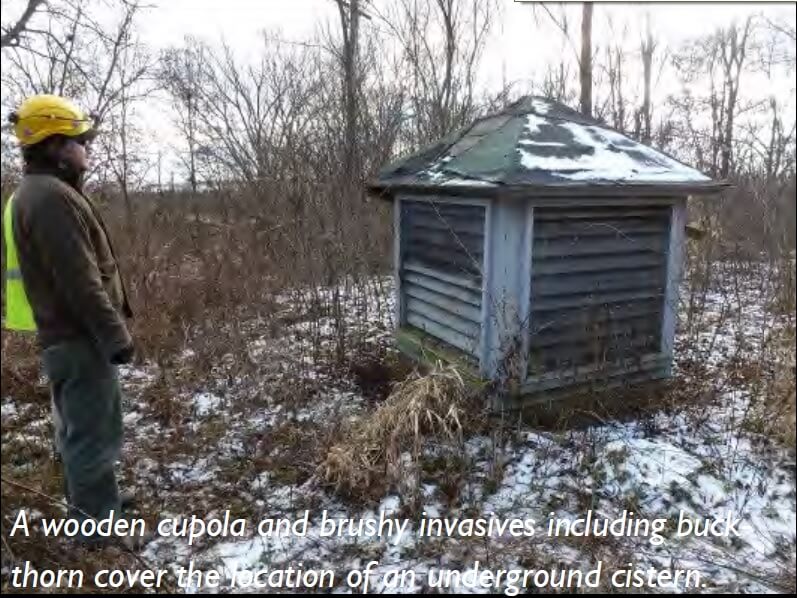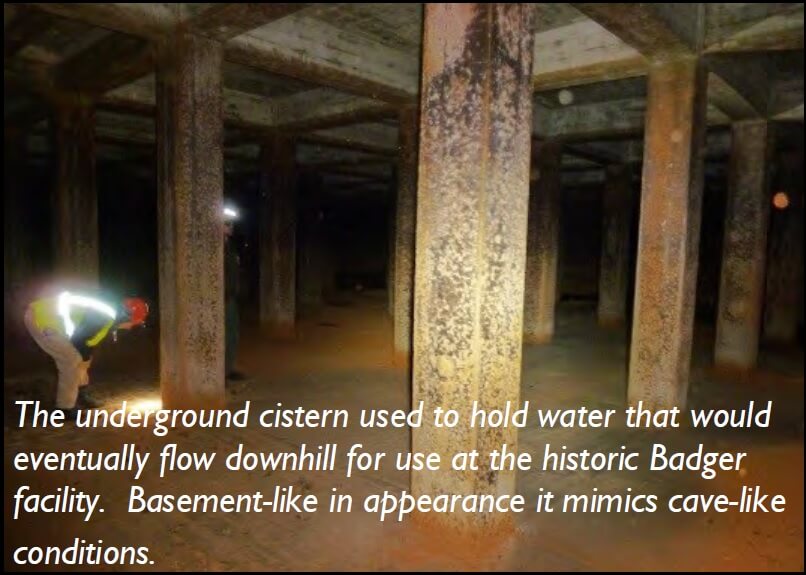By Randy Poelma, Ho-Chunk Nation Division of Environmental Health & Jennifer Redell, Wisconsin Bat Program ~

Resource managers from the Ho-Chunk Nation (Nation) completed a bat hibernaculum improvement project this fall on tribal lands at the former Badger Army Ammunition Plant parcel near Baraboo, Wis. The Ho-Chunk project focused on a three-acre area surrounding an underground concrete water reservoir, a cave-like cistern, and included the removal of invasive shrubs and the building and installation of bat-friendly gates.
The first step in encouraging bats to use the underground cistern was to make it accessible for them to initially locate and investigate. Invasive shrubs were removed by the Nation and a contractor as part of the Nation’s land management plan for the property and to improve access for bats to this potential winter hibernation site. Invasive shrub removal at the cistern is part of a much larger invasive management program at Badger. The Nation completed forestry mowing of invasive brush on 230 acres this summer and plans to treat 570 more acres this winter in preparation for prescribed burns planned this spring.

Rotting wooden cupolas atop openings to the reservoir were carefully removed and then replaced with engineered metal bat-friendly cupola-style bat gates. The gates allow bats to freely access the site while limiting access and safety concerns presented by tribal members visiting the property. Foam-board baffles were added to the ceiling inside the cistern to provide “traps” for rising warm air, thus creating a range of temperatures for bats to select from by mimicking the variability in ceiling height in natural caves.

If we build it, will they come? The Wisconsin DNR Bat Program, in coordination with the Ho-Chunk Nation, USDA-Dairy Forage Research Center, and Town of Sumpter has been monitoring bats at the Badger facility for several years and the cistern is an experiment to see if the bats will use artificial hibernation habitats. While bats in Wisconsin have an abundance of insect prey, water sources, and foraging areas available to them, we want to make sure they have a good number and distribution of the summer roosting and winter hibernation habitats they may need. Thus partners are trying at the Badger site, and elsewhere, to create artificial winter hibernation sites given the success of artificial summer roosts.

There are many unknowns about why bats select certain hibernation sites and not others. Information is lacking about the effects of air-flow, disturbance, and distance to summer roosts or navigational beacons on landscapes, and similar criteria on the selection of hibernacula by bats. Our work to turn the cistern into an artificial hibernation habitat is based on what is known at this time, and we surmise that bats may take up residence in newly accessible artificial hibernation sites provided the environmental conditions (temperature, humidity, airflow) are suitable for hibernation.

We know that bats are already using a range of “artificial” hibernation sites in Wisconsin that include mines, tunnels, beer caves, basements, sewers, and root cellars. We do not know how long it takes for bats to locate, investigate, select, and begin using artificial hibernation sites. There are no known recorded observations of when bats began using mines after mining operations began. The Nation and WDNR Bat Program will continue monitoring the cistern for the first evidence of resident bats and we are hopeful bats will find a winter home there.
For more information about the Wisconsin Bat Program, visit http://wiatri.net/Inventory/Bats/

